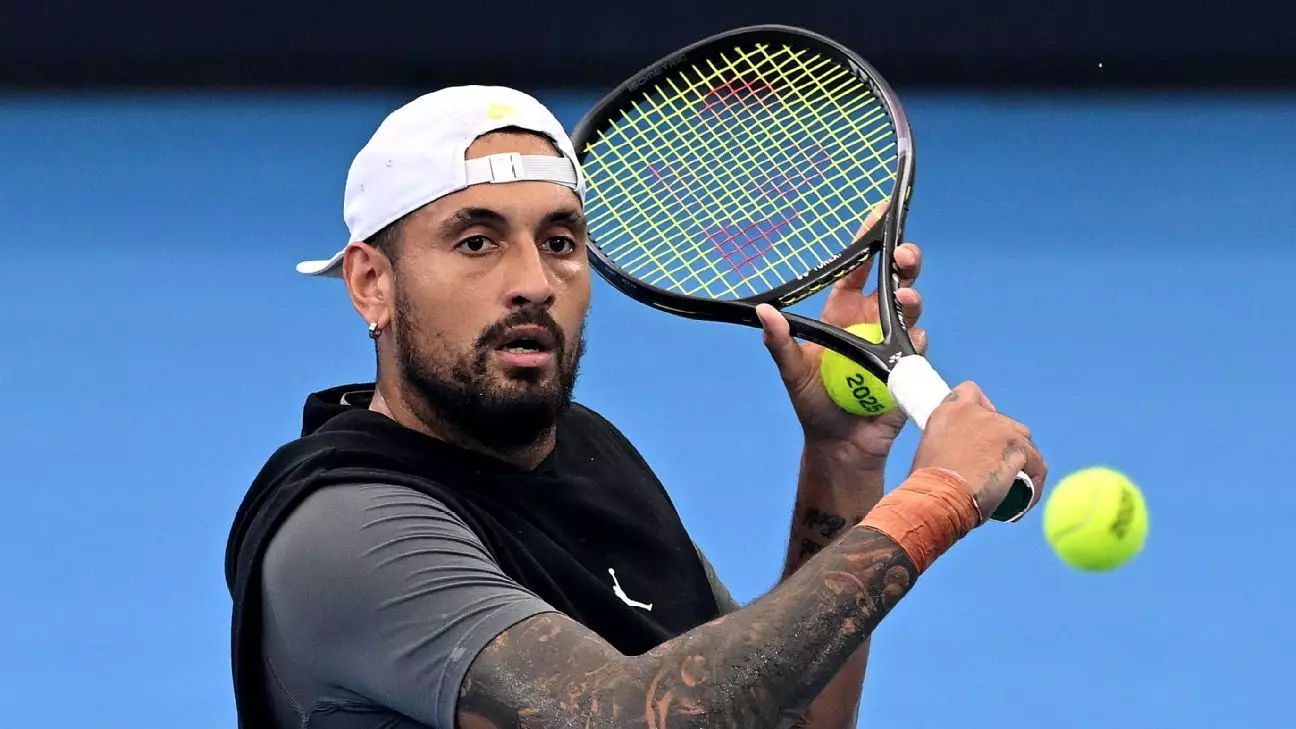Nick Kyrgios is a name that evokes strong emotions among tennis lovers and casual spectators alike. He is as much a part of the conversation surrounding modern tennis as any of the sport’s legends. As we gear up for the Australian Open, Kyrgios’s impending return to Grand Slam action could breathe fresh air into what some might describe as a sport stagnating under the weight of predictability. His unique persona and unpredictable playing style create an unmatched allure, making every court appearance a spectacle.
Kyrgios himself articulated a central theme in his approach to tennis: the intertwining of sport and personality. “We watch sport because we want personalities,” he mentioned, reinforcing the notion that drama and surprise are integral to entertainment. This narrative captures the essence of what Kyrgios represents: a thrilling unpredictability. The statements he makes about how each match could swing from controversy to collegiality highlight this fact. Unlike many players who maintain a stoic demeanor, Kyrgios thrives on the edge, often leading to explosive moments on and off the court.
His fiery nature is palpable in the way he engages with both the sport and its audience. From his remarkable trick shots, such as between-the-legs serves, to outbursts against officials, it is clear that Kyrgios possesses an innate ability to draw attention, whether positively or negatively. This blend of talent and theatricality adds an entertaining dimension to tennis, which can sometimes feel overly formal or mundane.
However, it is vital to acknowledge that Kyrgios’s talent does not overshadow his controversies. His past legal struggles, including a charge of common assault stemming from a heated argument with a former partner, raise questions about his behavior and its implications for the sport. While many adore him for his honesty and forthrightness, others argue that he sets a poor example for young athletes. This duality creates a complicated tapestry of public perception surrounding Kyrgios, making him one of the sport’s most divisive figures.
His comments about doping allegations involving contemporaries Jannik Sinner and Iga Swiatek only add to the complex thread of his narrative as well. While some view his candor as refreshing, many others perceive it as reckless, especially when it undermines his peers. Kyrgios seems to revel in being a provocateur, yet this persona can detract from his undeniable skill on the court. It raises the question: does his behavior enhance or diminish the sport of tennis?
As Kyrgios prepares to step back into the Grand Slam setting after over two years, fans are eager to see which version of him will emerge. Competing in the Australian Open, he acknowledges the importance of returning to the sport, especially as it faces challenges in maintaining excitement. With his statement that the sport was becoming “a bit mundane,” Kyrgios sheds light on an element often overlooked in discussions about athletic competitiveness—how to keep the audience engaged.
In the lead-up to the Open, he has been working hard to recover from a multitude of minor injuries that have hindered his performance. Even in this context, excitement grows about his potential matchups against younger stars like Carlos Alcaraz and Jannik Sinner. Daniil Medvedev’s observation that “a healthy Kyrgios is definitely great for tennis” underlines the belief that Kyrgios can reinvigorate interest in the game through his talent and flair.
The dichotomy of love and hate surrounding Kyrgios encapsulates a broader debate about sporting conduct and the evolving landscape of public figures in athletics. As he gears up for the Australian Open, the anticipation signals that Kyrgios’s presence is more than just about competitive success; it’s about maintaining a dialogue on what sports can and should represent. Whether he brings excitement or controversy, one thing remains sure: Nick Kyrgios makes tennis far from boring. As we look ahead, we can only wonder how his participation will reshape the narrative of tennis in the coming years.

